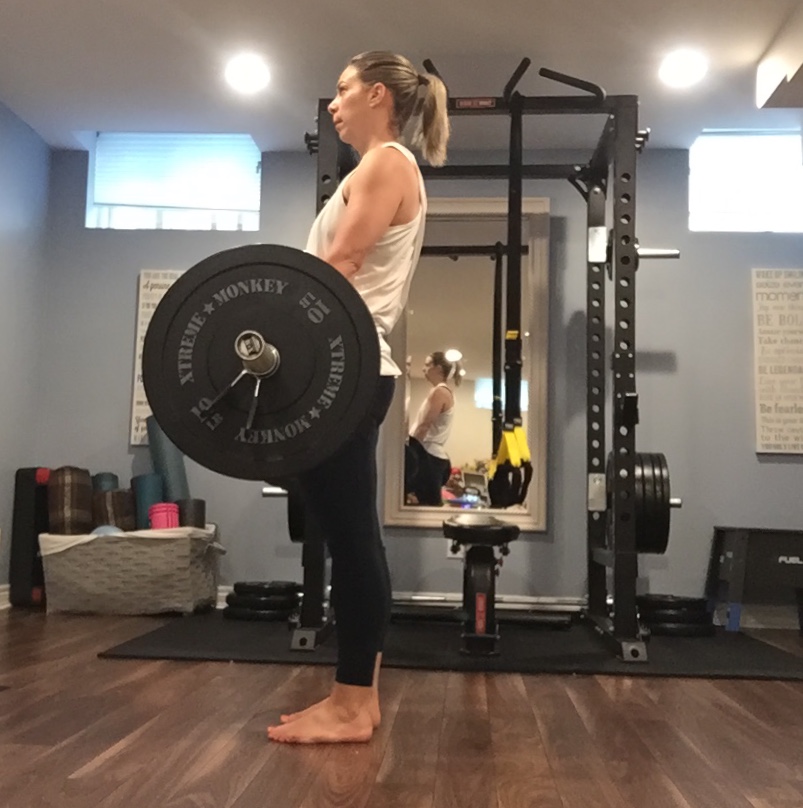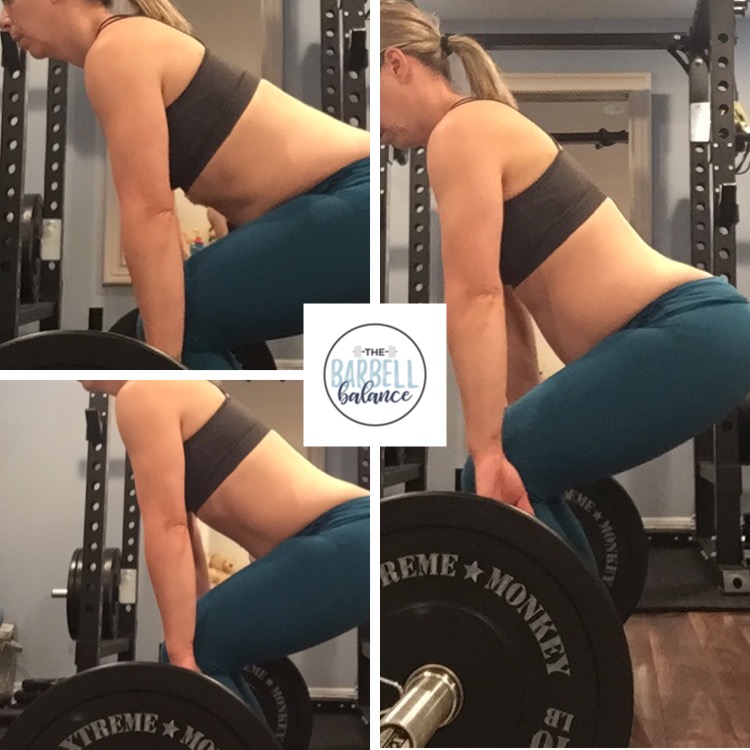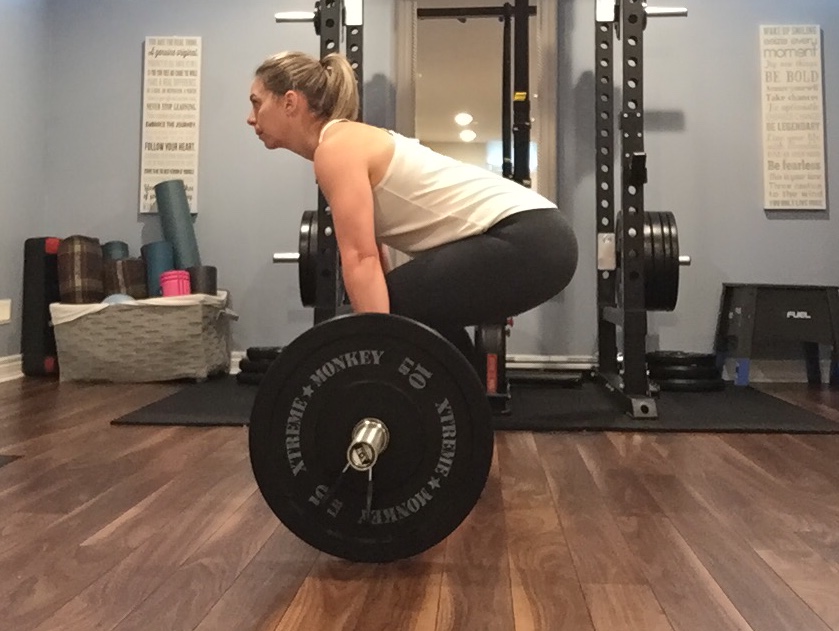I was having a conversation with a friend last week about lifting heavy objects. A favorite topic of mine, if you hadn’t noticed.
And my friend mentioned she stopped lifting heavy objects because deadlifts started hurting her lower back.
Tear.
Deadlifts are a life necessity. Whether you’re lifting kids, grocery hauls, or you love to lift because it makes you feel like the powerful woman you are, you need to learn to deadlift well.
Deadlifts are a hinge in the hip which allows us to take a bow in front of an audience of the reflection in the mirror. All jokes aside, this magnificent bend,
Lower back pain during deadlifts is a common phenomenon. So before removing it from the exercise docket, I encourage you to do something different, as my friend and mentor Antony Lo, PT says.
Today, we are going to dig deep into this pain in the back. You may find one of these simple fixes work, or you may need to give them all a try. Either way, my bet is you can find the solution right for you without cutting out the deadlift for good.
Check your chest position.
You maybe thrusting your chest up to the sky. When you do this, your back becomes curved, making your lower back work a tad bit harder. And your lower back gets grumpy.
Plus, your chest
 My chest is thrusting up which is causing my spine to arch. The overextension in the spine may
My chest is thrusting up which is causing my spine to arch. The overextension in the spine may
 My chest is in line with my ribs, keeping my spine in neutral.
My chest is in line with my ribs, keeping my spine in neutral.
 In standing, my chest is thrusting up, taking my spine out of neutral. The added load is being forced onto my low back
In standing, my chest is thrusting up, taking my spine out of neutral. The added load is being forced onto my low back

Standing in neutral with ribs stacked over hips allows for the muscles in the posterior chain (back of your body) as well as your core to work efficiently. With a little squeeze of the bum at the top
So if you want the work happening in all the right places (glutes, hammies, and lats), with some extra assistance from your core, keep your ribs inline with your hips. This will keep your lower back gleefully happy.
Consider your Core 4
Your Core 4 muscles are the deeper muscles made up of the diaphragm, pelvic floor, traverse abs, and multifidus which are muscles along the spine.
Typically, when people activate their core muscles, they activate their 6-pack muscles. I find when this is happening, the ab muscles towards the rib cage activate more than the ab muscles towards the pelvis. This may not be lending a helping hand to your low back.
You’re not activating your core at all. When this happens, the low back is doing most of the work. And the lower back gets cranky.
If you’re finding your low back is screaming at you, keep reading.
Learn to engage your Core 4. These muscles work together in helping you in protecting your spine, keeping it pain-free.
As you set yourself up, take a deep breath in through your nose, expanding through your ribs. As you exhale, lift your vagina muscles up and in, and pull your hip bones into your belly button. Then go ahead with your lift.
If you’re lifting light to moderately heavy (8-12 rep range), as you come back to starting position, inhale, keeping your Core 4 engaged.
If you’re deadlifting tough to heavy (1-4 rep range), you can inhale, relax your core 4 then reset.
It’s not too often I take my shirt off and show al the good. But for educational purposes, I’m letting it all hang out in the gloriousness of my body. Consider this your lucky day!
In the picture on the right, my belly is relaxed. This deadlift didn’t feel the best on my low back

My 6-pack muscles are active. If you take a closer look, you can see the activation coming more from the top. I didn’t feel much work coming from my lower abs.
In the picture on the right, there is no activation in more core and Core 4
The bottom left, I’m using my pelvic floor and the rest of my core 4. My low back felt better supported.
Your Core Stability
Above, you learned about the Core 4, the deep core muscles. Now it’s time to dig deeper into core stability.
Your core stabilizing muscles (front and sides of your abdominal muscles, the erector muscles in the back, glutes, as well as lats and psoas that span multiple joints) work together to stabilize your spine. This means these muscles work together to protect the spine.
If you find your lower back is giving you trouble, this may be that your core stabilizing muscles may not be able to meet the demands you’re placing on it. Yet
Your lower back pain may be because the muscles mentioned above are not able to work together efficiently enough, so the lumbar spine takes throws its hand in the mix, too.
In The Back Mechanic written by Dr. Stuart McGill. Dr. Stuart McGill is a
The exercises Dr. McGill has found to increase the stability of the core without additional stress is known as The Big 3
Curl Up:
If you’re a new mom or are experiencing Diastasis recti, you may be thinking I’m bananas for suggesting a curl up. I thought this a while back, too. But a curl up is a functional task the human race uses every day. And this movement should be worked on for most people.
Bird-Dog
Side Plank
Stretching alone isn’t always the fix for lower back pain. And for most people, strengthening the core may be the better fix. So if you’re finding you’re stretching your back to no avail before, during, and after your workouts, it may be time to do something different.
There are a number of reasons why you have lower back pain when you deadlift. It could be the time you went out with your friends and wore stilettos all night long while getting your groove on.
All jokes aside, there are a number of reasons why your lower back hurts a little when you deadlift which include, your lats not firing, your starting too far from the bar, and you thrust your hips too far forward at the top of the lift.
But if you’re hurting during and after your lifting session, it doesn’t necessarily mean you need to quit deadlifting. Take a step back and check how you’re performing the lift from top to bottom. Or better yet, bottom to top.
Is back pain keeping you from lifting heavy objects or running circles around your kiddos? In my 1:1 online Body Revitalization Program for women, you can tackle your lower back pain in addition to your pelvic floor symptoms with a handcrafted program designed for you.
Tap here to read this page and see if The Body Revitalization Program is a good fit.
Ciao friend,
Terrell


